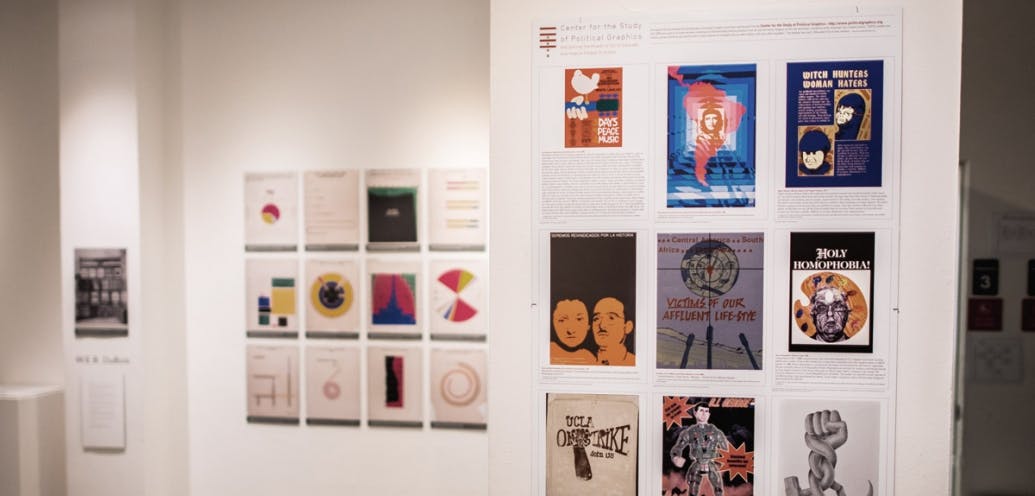As the 2017–18 academic year began, the Seattle Pacific Art Center opened an exhibit unlike anything installed before.
A graphic design show, Observe | Make | State brought together posters, charts, and other graphic-design reproductions from four influential individuals: W.E.B. DuBois, Chaz Maviyane-Davies, Garland Kirkpatrick, and Emory Douglas. Spanning 100 years of work, they all addressed issues of social justice.
“SPU is looking for ways to have diverse, inclusive, equitable conversations, because our community cares so much about reconciliation,” says Karen Gutowsky-Zimmerman, professor of art–visual communications. “It’s essential we have places and spaces that foster these kinds of conversations.”

Visitors were invited to take part as well. By including a makerspace with paint and other tools, the show offered visitors a way to respond to what they’d seen by adding their own art about the topic.
Four large boards hung on one wall, each holding a single word — “Concern,” “Equity,” “Identity,” and “Culture.” Community members could add their art or messages to the boards while processing the exhibit.
Laura Lasworth, professor of art, says when Art Department graduates came together at October’s Grand Reunion, they were drawn by that opportunity. “A lot of our alumni came to the exhibit and knew exactly how to approach the makerspace,” she says. “It was fantastic.”

Adjunct Instructor of Art Andy Peterson brought about 30 freshmen to the show from his visual literacy class. He asked these non-art majors what the show was communicating. After nearly 15 minutes of quiet observation, he says, students formed a circle in the center of the gallery to discuss their responses to what they viewed.
“Conflicting views were passionately and respectfully discussed,” Peterson says. “It went beyond the end of class.”
The discussion also filtered into Print magazine, which highlighted the art center’s show in an article about designer Kirkpatrick.
Those are just the kind of responses the art center had hoped for.




